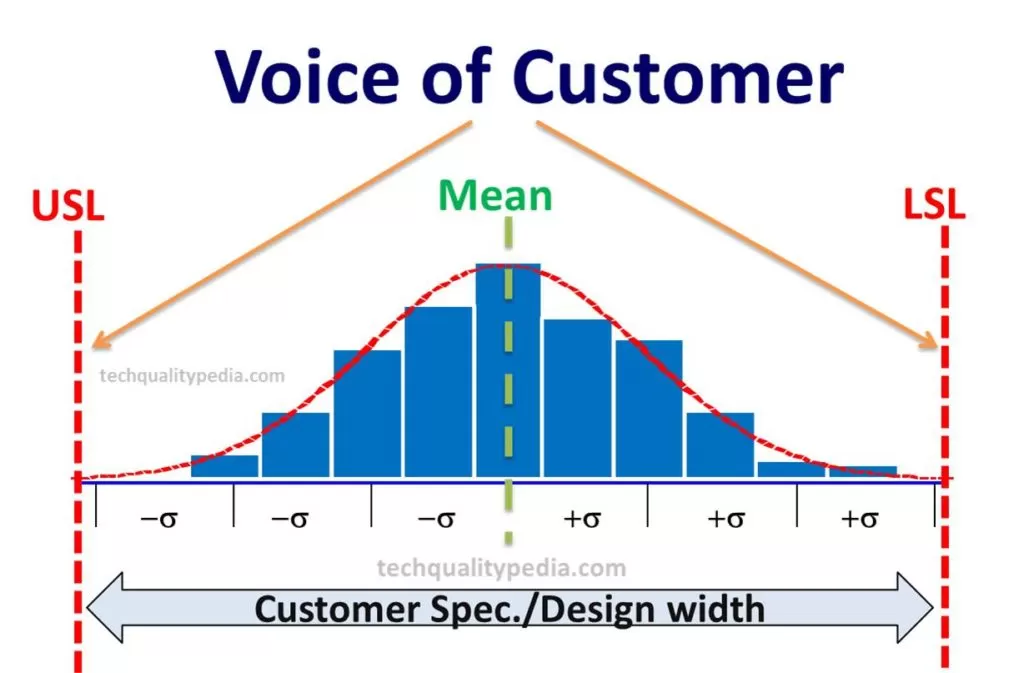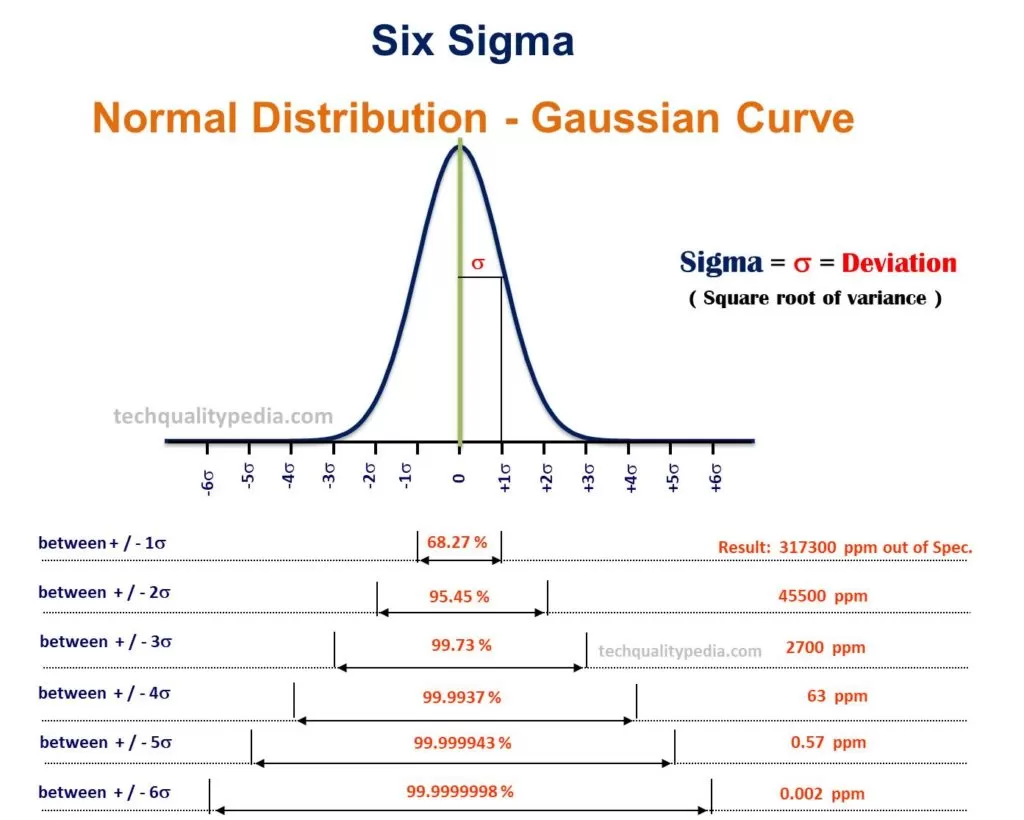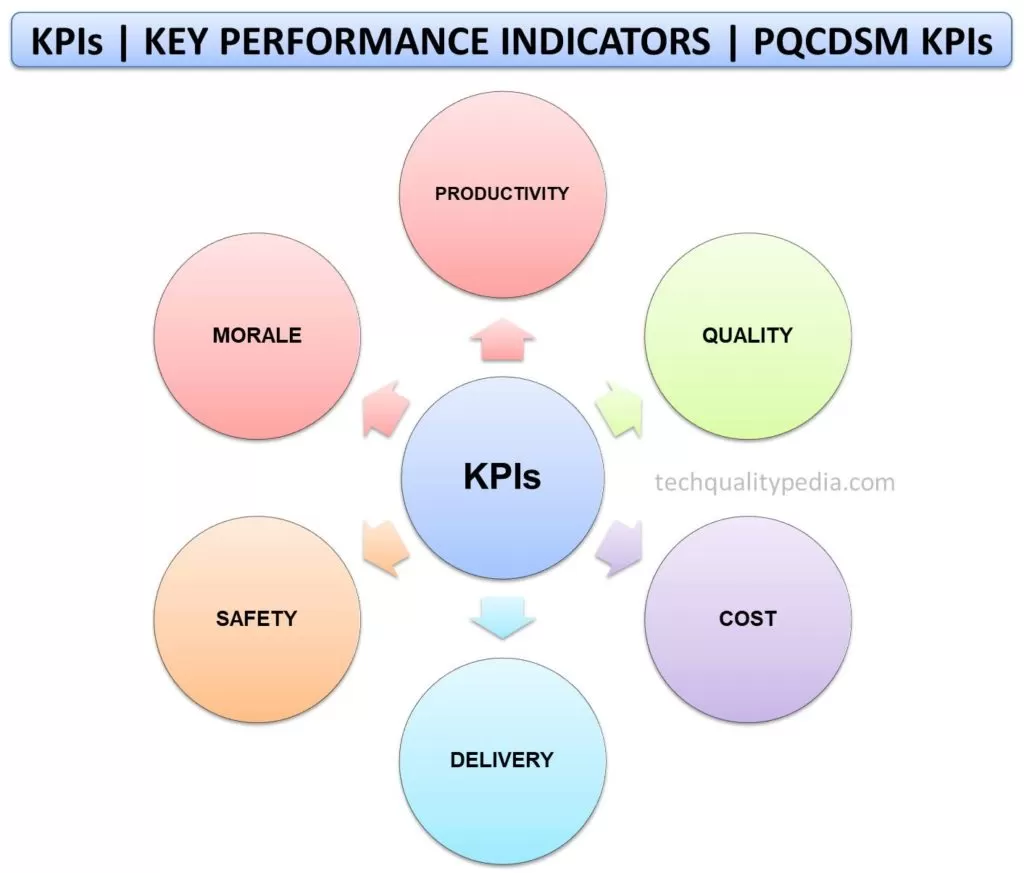Voice of Customer(VOC) is also called a Customer Standard or Specification requirement.
For better understanding, VOC is explained with following steps:
- A process is an activity that converts an input into a process output.
- The requirements of the output are given by the customer.
- The variation in the output is governed by the process.
- The customer usually provides a specification that has a mean or target value.
- The customer also provides tolerance limits to account for process variation:
- LSL- Lower Specification Limit and
- USL- Upper Specification Limit
- The specification range is: USL-LSL
- The customer expects the part/product supplies to follow a normal distribution with the specification with the supplies average matching with specification mean and all parts within tolerance. This is called theVoice of the Customer.

To enhance the quality of products, processes, and services, organizations do research and determine what the customer wants, requirements and expectations from their product/service by using VOC (Voice of Customer).
Table of Contents
Voice of Customer Definition | Meaning
Voice of Customer (VOC) can be defined as the systematic approach of collecting the needs, wants, requirements or expectations of the customer about the products or services that you have provided to them.
The Voice of the Customer is also defined as a research technique that used to gathered customer feedback.
In addition, VOC is often viewed as a process for monitoring, analyzing, and controlling process variation to improve the quality of products, processes, and services.
A Voice of Customer Program may provide you insights into how your customer feel about your products or services and allowing you to improve the customer experience.
Voice of Customer Six Sigma
Voice of customer inSix Sigmameans to reduce the process variation and ensure to reduce the number of defects to as low as 3.4 parts per million(PPM). It uses the Normal Distribution to predict failure/defective rates.
Standard Deviation –The standard deviation (σ) measures the spread of the dataset relative to its means. The spread or dispersion of the dataset should be within the specified limits(between upper and lower specifications) provided by the customer(see image for clarity. The specification range or limits is called theVoice of Customer VOC.
Voice of Customer Research | Analysis
There are various systems/procedures, software, and tools available and used by organizations to understand theVoice of Customer VOCeffectively. The particular system or procedures or tool may vary depending on the type of product or service offered by an organization.
TheVoice of Customer Researchor Analysis includes the following steps:
- The first step inthe Voice of Customer Process or Programis to identify the customers. The customer may be external or internal. Most business organizations focus completely on the final or end customer/user of the product or service, and forget about other customers like distributors, internal employees, contractors, retailers, etc. Remember that you missed opportunities if you missed customers. So, it is important to consider/identify all the customers when developing and putting into place a VOC process or system.
- Methods or tools used for data/information/feedback collection.
- Analyze the customer’s needs, wants, and expectations.
- Develop a solution to enhance customer satisfaction.
Voice of Customer Tools
To capture the Voice of Customer (VOC), the following VOC tools or methods are used:
- Surveys
- Interviews
- Meetings
- Customer complaint data
- Customer satisfaction index
- Customer service reps
- Customer focus groups
- Company data
You might also like:



